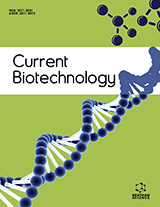Abstract
Background: Proper understanding of the true microbial diversity of cassava waste (CW) and their technological significance is critical for efficient utilization of the waste for value addition.
Objective: In this study, technologically relevant characteristics of bacterial species associated with cassava peel waste (CPW) and cassava wastewater (CWW) were investigated with a view to identifying their industrial potential.
Methods: Genotypic method involving sequencing of the 16S rRNA gene was used for identification of the bacterial species. Bacteriocin, H2O2, organic acid, linamarase, α-amylase and tannase production were determined using standard methods.
Results: Twenty four bacterial species were isolated from CPW. The predominant species were Bacillus licheniformis (11.3%) and B. subtilis (11.3%). In CWW, 26 bacterial species were isolated. Lactobacillus fermentum (11.1%) was the most abundant species, followed by Lactobacillus plantarum (10.7%). Bacteriocin production was more common among L. fallax and L. fermentum from CWW and Bacillus species from CPW while H2O2 was more common among L. fermentum, L. delbrueckii and Leucoostoc fallax from CWW. L. plantarum from CWW were better acid producers and capable of faster acid production than L. fermentum and Leuconostoc fallax. Linamarase activity was highest in Bacillus coagulans, B. licheniformis, L. plantarum and L. fermentum from CPW. However, appreciable activity was also observed in L. plantarum, L. fermentum and Leuconostoc fallax from CWW. Bacillus species from CPW also showed α-amylase and tannase activities.
Conclusion: This study showed that CW, on account of its rich bacterial diversity and techno-functional properties, has great potential for the food industry.
Keywords: Bacteriocin, cassava peel, cassava wastewater, linamarase, PCR, tannase activity, 16S rRNA.
Graphical Abstract
Current Biotechnology
Title:Techno-functional Properties of Bacterial Species Associated with Cassava Waste
Volume: 7 Issue: 2
Author(s): Aniekpeno Isaac Elijah*, Olusegun O. Atanda, Akinola R. Popoola, Christiana Ngozi Opara, Leonard Oniovosa Governor Adamu and Sylvia Veronica Ajagugha Uzochukwu
Affiliation:
- Department of Food Science and Technology, University of Uyo, Uyo,Nigeria
Keywords: Bacteriocin, cassava peel, cassava wastewater, linamarase, PCR, tannase activity, 16S rRNA.
Abstract: Background: Proper understanding of the true microbial diversity of cassava waste (CW) and their technological significance is critical for efficient utilization of the waste for value addition.
Objective: In this study, technologically relevant characteristics of bacterial species associated with cassava peel waste (CPW) and cassava wastewater (CWW) were investigated with a view to identifying their industrial potential.
Methods: Genotypic method involving sequencing of the 16S rRNA gene was used for identification of the bacterial species. Bacteriocin, H2O2, organic acid, linamarase, α-amylase and tannase production were determined using standard methods.
Results: Twenty four bacterial species were isolated from CPW. The predominant species were Bacillus licheniformis (11.3%) and B. subtilis (11.3%). In CWW, 26 bacterial species were isolated. Lactobacillus fermentum (11.1%) was the most abundant species, followed by Lactobacillus plantarum (10.7%). Bacteriocin production was more common among L. fallax and L. fermentum from CWW and Bacillus species from CPW while H2O2 was more common among L. fermentum, L. delbrueckii and Leucoostoc fallax from CWW. L. plantarum from CWW were better acid producers and capable of faster acid production than L. fermentum and Leuconostoc fallax. Linamarase activity was highest in Bacillus coagulans, B. licheniformis, L. plantarum and L. fermentum from CPW. However, appreciable activity was also observed in L. plantarum, L. fermentum and Leuconostoc fallax from CWW. Bacillus species from CPW also showed α-amylase and tannase activities.
Conclusion: This study showed that CW, on account of its rich bacterial diversity and techno-functional properties, has great potential for the food industry.
Export Options
About this article
Cite this article as:
Elijah Isaac Aniekpeno *, Atanda O. Olusegun , Popoola R. Akinola , Opara Ngozi Christiana , Adamu Oniovosa Governor Leonard and Uzochukwu Veronica Ajagugha Sylvia , Techno-functional Properties of Bacterial Species Associated with Cassava Waste, Current Biotechnology 2018; 7 (2) . https://dx.doi.org/10.2174/2211550106666170621103653
| DOI https://dx.doi.org/10.2174/2211550106666170621103653 |
Print ISSN 2211-5501 |
| Publisher Name Bentham Science Publisher |
Online ISSN 2211-551X |
 21
21 1
1 1
1 1
1
- Author Guidelines
- Bentham Author Support Services (BASS)
- Graphical Abstracts
- Fabricating and Stating False Information
- Research Misconduct
- Post Publication Discussions and Corrections
- Publishing Ethics and Rectitude
- Increase Visibility of Your Article
- Archiving Policies
- Peer Review Workflow
- Order Your Article Before Print
- Promote Your Article
- Manuscript Transfer Facility
- Editorial Policies
- Allegations from Whistleblowers
- Announcements























